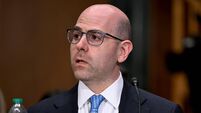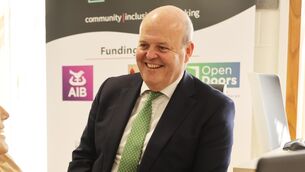John Whelan: Pharma in Ireland has bounced back, but how long will it last?

Eli Lilly, with facilities in Limerick and in Kinsale and Little Island in Cork, has already lowered the wholesale price of its most prescribed insulins by 70%.
Ireland’s long-term focus on the pharmaceutical industry has paid dividends for the export sector over many years, boosting revenue growth when other sectors have faltered, and ploughing billions into research and manufacturing facilities.
Hence, when a dip in revenue hit the sector in 2023, the first in over a decade, there was concern in government circles, as well as the wide-ranging supply chain that relies on the pharma sector, that we were reaching the end of an era of growth, with implications for the wider economy.
Some of the 2023 sales loss, was associated with a wider industry post-covid adjustment as the pandemic retreated and product demand dropped rapidly. But there were other factors, including the loss of exclusivity on major products as patent protections expired and government medicines price controls.
However, the tide has turned in 2024 and exports sales in the five months to May gushed forward by 26%, with forecasts of them reaching an all-time high of €93bn in exports by the year's end.
Whereas this is good news, it also underscores the reliance of Ireland’s export industry on pharmaceutical output which has grown rapidly over the past decade to dominate our export sales, accounting for 40% of total goods exports in the first five months of this year.
And there are many worrying clouds on the horizon; Drug manufacturers face stricter access and pricing environments across many geographies as health systems pursue reforms to contain healthcare spending.
The United States is currently undergoing its biggest change in more than 20 years. Previously a free-pricing market, price regulation is now being introduced as part of the Inflation Reduction Act (IRA), a multi-billion-dollar stimulus package signed off in 2022.
The ramifications could be catastrophic for the wide range of US-owned pharma companies that manufacture here and ship back to consumers in the US. Eli Lilly, with facilities in Kinsale, Little Island in Cork, and Limerick for example has already lowered the wholesale price of its most prescribed insulins by 70%.
Proposed legislation in the EU is expected to reduce drug companies’ exclusivity patent window, by two years from 10 to eight years, after which generic or biosimilar manufacturers may enter the market.
In Germany, the government is seeking to address perceived shortcomings of its national pharmaceutical regulations with further reforms to control drug costs.
Meanwhile, in Italy, the long-anticipated reorganization of the Italian Medicines Agency is underway. In Japan and China, governments are pursuing similar initiatives to lower drug prices.
What these far-flung initiatives add up to is a pharmaceutical industry facing uncertainty and the prospect of significant pressure on its revenue mode.
Manufacturing cost control has now pushed up to the top of Big Pharma’s priority list, forcing difficult decisions to prune pipelines, reallocate budgets, restructure teams, reduce headcount and more.
Pfizer and Sanofi, for example, have both announced ambitious cost-realignment strategies aimed at saving billions. Johnson & Johnson, meanwhile, is discontinuing multiple clinical programs to narrow its focus to only its most pivotal ones and accelerate their time-to-market.
How these pressures on Big Pharma will impact the Irish export scene, which they dominate, remains uncertain.
Industry analysts expect these global pharma manufacturers will focus more of their external investments on partnership and collaboration agreements with smaller start-up companies, who have developed attractive new products.
These agreements generally involve lower upfront capital investment, allow for greater diversity across investments than large acquisitions, and are less harmful to their bottom line, and the high risk of failure inherent in developing in-house. This will only partially offset the substantial ongoing investment needed in research & development for new drugs, which they will need to offset the expiration of product revenues when patent exclusivity ends and profitability drops due to the ongoing price pressures by government agencies.
New drugs addressing a global medical need continue to be the industry's holy grail, but they are costly to develop. Arguably, Novo Nordisk and Eli Lilly with their groundbreaking new obesity control medicines are typical examples, sparking something of a gold rush in the pharmaceutical industry.
Obesity has now reached epidemic proportions and it is estimated that by 2030 over one billion adults globally will be obese, according to the World Health Organization.
Danish-owned Novo Nordisk has fortunately opted for Ireland as a manufacturing base, purchasing the Alkermes pill factory in Athlone last year, although it has dropped its plan to build a large facility in Grange Castle in Dublin.











